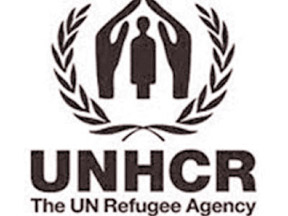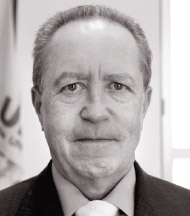Refugees, asylum-seekers and obligations of states
 Ten Top Questions on Refugees and Asylum-Seekers answered by UNHCR’s
Representative in Sri Lanka Michael Zwack on World Refugee Day, 2012. On
June 20, UNHCR marks World Refugee Day, remembering the struggle of
millions of people fleeing violence and persecution across borders. The
latest UNHCR figures in the Global Trends 2011 report released Monday
show that in 2011 more people became refugees than at any time since
2000. Worldwide, 42.5 million people ended 2011 either as refugees
(15.42 million), internally displaced (26.4 million), or in the process
of seeking asylum (895,000). Ten Top Questions on Refugees and Asylum-Seekers answered by UNHCR’s
Representative in Sri Lanka Michael Zwack on World Refugee Day, 2012. On
June 20, UNHCR marks World Refugee Day, remembering the struggle of
millions of people fleeing violence and persecution across borders. The
latest UNHCR figures in the Global Trends 2011 report released Monday
show that in 2011 more people became refugees than at any time since
2000. Worldwide, 42.5 million people ended 2011 either as refugees
(15.42 million), internally displaced (26.4 million), or in the process
of seeking asylum (895,000).
The number of refugees and asylum-seekers in Sri Lanka is tiny
compared with other countries in the Asian region; for example, Pakistan
hosts more than 1.5 million refugees while Sri Lanka mid-June 2011
hosted 88 refugees and 243 asylum-seekers.
On the other hand, there are 136,605 Sri Lankan refugees and 8,634
Sri Lankan asylum-seekers in various countries in the world, mainly in
India.
1. Who is a refugee and who is an asylum-seeker and what is a person
of concern to UNHCR?
There is a lot of confusion about some of these terms, particularly
here in Sri Lanka where sometimes displaced people are called refugees
and migrants are called asylum-seekers so I will try and make it clear.
A refugee is a person who owing to a well-founded fear of being
persecuted for reasons of race, religion, nationality, membership of a
particular social group, or political opinion, is outside the country of
his nationality and is unable to or, owning to such fear, is unwilling
to avail her/himself of the protection of that country. Persons who are
fleeing armed conflict or civil unrest in their home countries can also
be considered refugees. Refugees often return home after a conflict is
over, and that’s happening here with some Sri Lankan refugees returning
home from exile abroad.
 |
|
Michael
Zwack |
An asylum-seeker is someone who has made a claim that he or she is a
refugee and is waiting for that claim to be accepted or rejected. A
migrant is someone who leaves their country of origin for financial
reasons or other reasons, such as family or education. Refugees,
including returning refugees, and asylum-seekers are considered people
of concern to UNHCR because they come under our international mandate.
Migrants are not considered people of concern to UNHCR even though
sometimes migrants and asylum-seekers use the same means to reach other
countries.
2. Are people leaving Sri Lanka illegally in boats migrants or
asylum-seekers?
That is not for UNHCR in Sri Lanka to determine. Some could be
migrants seeking a better life in another country others could be
asylum-seekers who believe they are not safe here. If they do claim they
are refugees that claim will be considered in the country where they
land, either by the government or if there is no national asylum
process, by UNHCR. In Sri Lanka, as well as throughout the world, UNHCR
has been mandated to determine the status of asylum-seekers when they
are in countries other than their own.
3. What are the obligations and rights of refugees and
asylum-seekers?
Refugees and asylum-seekers are required to respect the laws and
regulations of their country of asylum. They are not above the law. If
in the unfortunate event that they are suspected of committing a crime
then they can be prosecuted under the law, with one exception: they
cannot be deported back to their home country. In Sri Lanka, it is rare
for us to hear of refugees and asylum-seekers breaking the law.
A refugee has the right to safe asylum. They should receive the same
basic help as any other foreigner including access to medical care,
schooling and the right to work. In Sri Lanka, the government gives
access to medical care and schooling but refugees and asylum-seekers are
not allowed to work.
4. How are refugees protected?
Normally, governments guarantee the basic human rights and physical
security of their citizens. When a refugee has fled to another country
UNHCR’s main role is to ensure that states are aware of and act on their
obligations to protect refugees and people seeking asylum. One of the
most important things for states to know is that they may not forcibly
return refugees to a territory where they face danger.
5. Where does Sri Lanka stand in comparison to other countries in
terms of producing and receiving refugees and asylum-seekers?
The latest global statistics came out on Monday and are available on
UNHCR’s website www.unhcr.org The statistics shows there are 136,605 Sri
Lankan refugees in various countries in the world while in Sri Lanka,
according to our latest statistics end-June 2012 there are 92 refugees
and 238 asylum-seekers from other countries.
Pakistan is the largest refugee hosting country in the world with 1.7
million refugees, followed by Iran (887,000), then Syria (775,400).
6. How do asylum-seekers enter Sri Lanka and then what happens?
Virtually all asylum-seekers that we know of arrive by air to
Colombo. As the government doesn’t have its own national asylum
legislation, UNHCR, under an agreement with the government undertakes
refugee status determination - that is what we call the detailed process
of interviewing and assessing each individual’s story as to why they
left their home country. Of course, we keep the government fully
informed on a regular basis regarding the results of these procedures.
Asylum-seekers generally approach UNHCR’s office and lodge a claim
for asylum. This can be a long process as our staff must check to see if
the claims are credible. Then, if they are determined to be refugees, we
do our utmost to try to find a solution for these refugees. Normally,
there are three solutions - repatriation (if they want to return home),
integrating into the country where they have sought asylum, or
resettlement to a third country. In Sri Lanka, the government doesn’t
allow refugees to stay here, and only a tiny number wish to return home,
so UNHCR looks for countries which can offer resettlement to these
refugees. That also can take time and depends on the goodwill of these
resettlement countries.
7. How difficult is it for refugees and asylum-seekers from other
countries?
Being a refugee or asylum-seeker is always difficult. People have
left their homes and families because they feared for their own security
and they had no choice. They are living in a foreign country trying to
survive and unsure of their future for themselves and their families.
One of the most important things is for there to be the space and time
to find solutions for these people and that’s the current situation here
in Sri Lanka. Refugees and asylum-seekers once they have lodged a claim
are issued with certificates which have special security features to
prevent forgery. This allows the authorities to understand that they
have a special status and are not visa overstayers.
8. What happens to asylum-seekers whose claims are rejected?
On a regular basis, UNHCR gives the Department of Immigration and
Emigration a list of asylum-seekers whose claims have been rejected.
Failed asylum-seekers are no longer considered in need of international
protection or considered people of concern to UNHCR. If it wishes, in
accordance with its own laws, a government can send these people back to
their home countries, including by deportation. However, this should be
done in a humane manner.
9. Why is it important for the government to allow space for
asylum-seekers and refugees in Sri Lanka?
It’s a fundamental principle of international customary law that
refugees should not be expelled or returned to countries where their
life or freedom would be threatened. By allowing asylum-seekers to lodge
their claims and wait until UNHCR has determined whether they are valid
or not, and by allowing refugees to live here until UNHCR can find a
solution for them, Sri Lanka is acting in line with international and
humanitarian norms. Sri Lanka has not yet signed the 1951 Refugee
Convention and its 1967 Protocol which are the foundation of refugee
protection but it is important that they continue to act in the spirit
of the Convention to protect refugees.
10. What is your greatest hope for refugees and asylum-seekers?
After a long career in UNHCR, my greatest wish is obviously that
people are not forced to flee their homes and countries to find safety
and protection. But, if this does happen, I hope that all individuals
and governments act with humanity and understanding towards refugees and
asylum-seekers and adhere to international norms in the way they are
treated.
For more information on World Refugee Day and how UNHCR works to help
those displaced please go to www.unhcr.org
|



